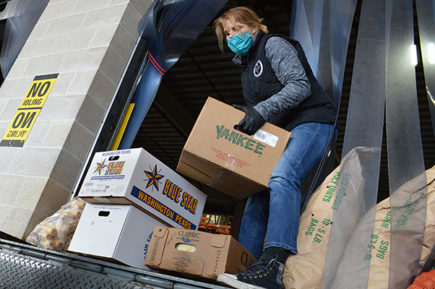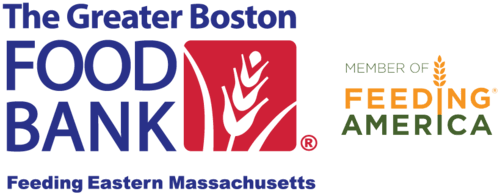Community Investment Grants

How does GBFB serve more clients, distribute more food, and reach more communities?
It starts with supporting our community partners.
Since 2013, The Greater Boston Food Bank (GBFB) has helped partner agencies better meet the need in their communities through capacity building grants. In addition to funding mission-critical projects, this program, now called the Community Investment Grant Program, deepens connections with our nearly 600 agency partners.
This program helps GBFB partner agencies increase their capacity to serve more clients, distribute more food, including more perishable, healthy food, and/or serve underserved communities where hunger relief resources are either not available or are unable to meet the need.
Partner agencies can apply for up to $40,000 from GBFB each year. Applications are reviewed by an interdisciplinary group of GBFB team members.
This year marks the 10-year anniversary of GBFB investing in agency partners. The program has grown significantly over the years, from $20K invested in FY13 to over $850K invested in FY22—resulting in over $4M invested in our network to date.
Grants have been made to agencies in approximately 136 cities and towns and every county in Eastern Massachusetts, including both Dukes and Nantucket counties.
Typical projects that have received funding include commercial and walk-in refrigerated and frozen storage, shelving, trucks and vans, and technology.
Focusing on improving equity
Over the years, the grant categories and priorities have continued to evolve.
- In FY21, following the findings from our Gaps in Food Access report, GBFB added service to communities of color as a grant priority
- In FY22, organizational funding became a fulfillment category for the first time, which allowed agencies to apply for one-time funding for new operational costs such as staff time
- In FY23, following finding from our Opportunities to Improve Food Equity and Access report, GBFB added additional priorities to the grant consideration process: service to communities disproportionately impacted by food insecurity, inclusion of client voice, and demonstration of community engagement
“Equity must remain a priority as we look towards the future of hunger relief efforts,” said Jonathan Tetrault, Vice President of Community Impact. “As our research shows, our neighbors across Eastern Massachusetts, particularly those of color and the LGBTQ+ community, continue to struggle to make ends meet as food costs are rising faster than they have in over 40 years. We remain hopeful about the impact our continued grantmaking efforts will have in supporting our essential network of partners and easing the burden of food insecurity.”
As food insecurity continues to rise, these grants are more essential than ever before because they help our partners expand their services, increase capacity, and deliver more healthy food to those in need, prioritizing diverse and high need populations throughout our service area.
“This program continues to evolve as we recognize this is our opportunity to cause and effect change and to better meet the specific needs of our partner agencies and the communities they serve,” said Catherine D’Amato, GBFB President and CEO. “By investing in our essential partner agencies through grantmaking, we aim to target high populations of need and empower and equip them to dream bigger about the impact they can have in driving out hunger across Eastern Massachusetts.”
This past 2022 holiday season, to counter rising costs and inflation, GBFB offered $2,000 in direct funding to all our agencies. Agencies used these funds however they deemed most beneficial to their community needs. Agencies reported applying their funds toward specialty foods, household and personal care items, transportation costs, and infrastructure improvements, among other things.
2022 Community Investment Grant Recipients
Past year’s recipients
2021 Capacity Grant Recipients
2020 Capacity Grant Recipients *
2019 Capacity Grant Recipients
2018 Capacity Grant Recipients
2017 Capacity Grant Recipients
2016 Capacity Grant Recipients
2015 Capacity Grant Recipients
2014 Capacity Grant Recipients
2013 Capacity Grant Recipients
* In 2020, in lieu of the annual capacity-building grant program, GBFB pivoted in response to the pandemic to provide $1 million in emergency funds in the form of unrestricted grants to help all member hunger-relief organizations stay open and actively serving their communities.
